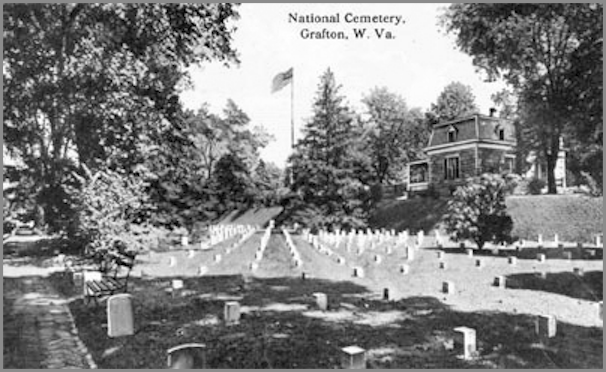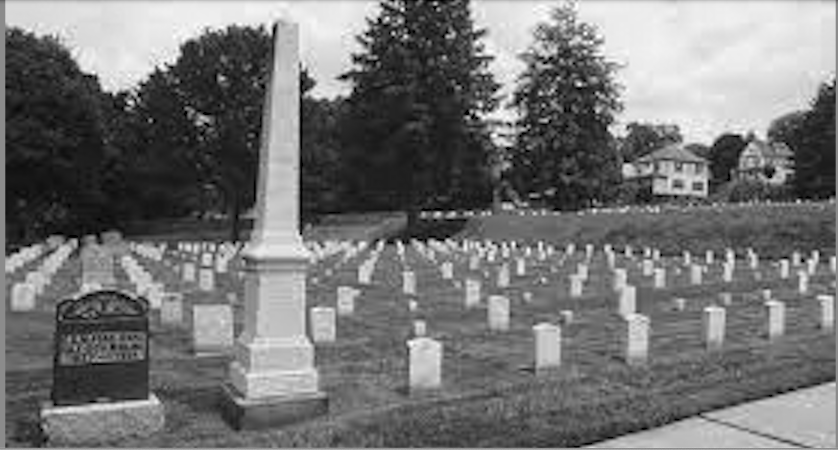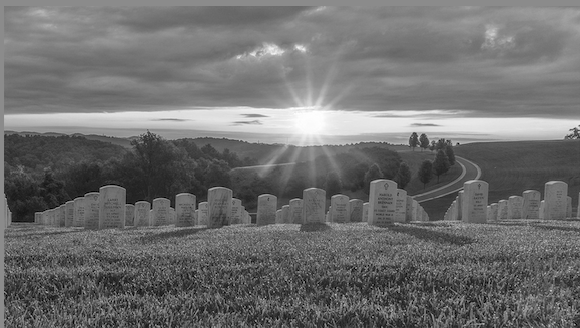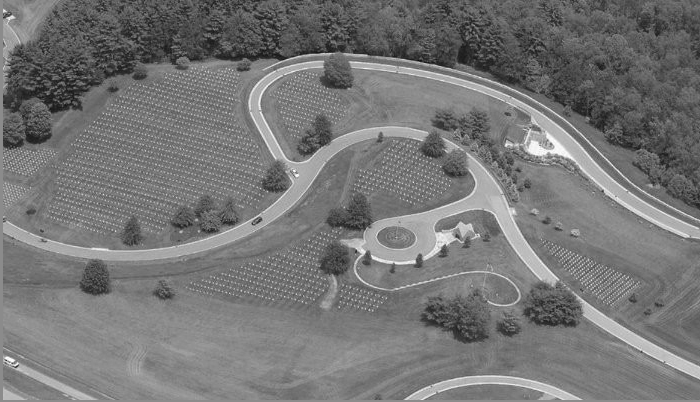

WV National Cemetery at sunrise.
Grafton National Cemetery
& West Virginia National Cemetery
As West Virginians join the rest of America to reflect on the service and sacrifice of our fallen soldiers who were killed in action (KIA), died of their wounds (DOW), died of diseases they caught while serving (DOD), and those who offered the ultimate sacrifice, but God saw fit for them to make it back home, and have since passed from this world, we are reminded that freedom was not and still is not free. State and local leaders annually join with Veterans and civilians to honor and remember Memorial Day at Grafton National Cemetery.
But, before going further, I should explain the difference between national cemeteries and other cemeteries for those of you who might wonder. U.S. National Cemeteries are military cemeteries that contain the graves of U.S. military personnel, Veterans, and sometimes their spouses or dependents. Regular cemeteries do not have these restrictions. There is a total of 171 U.S. National Cemeteries located in the United States and an additional 26 U.S. National Cemeteries outside of the country.
West Virginia has been blessed with two U.S. National Cemeteries. They are Grafton National Cemetery and West Virginia National Cemetery in Prunty Town. Both are in Grafton. I was privileged to attend the funeral of a Veteran who was interred at Grafton National Cemetery a couple of years ago and the honor and dignity with which he was laid to rest was something I shall never forget.
I wanted to give a little history of the Grafton National Cemetery. The property was appropriated in 1867 when Maj. R. C. Bates was ordered by the War Department to locate a permanent burial site for the Union soldiers who had died in hospitals and battlefields throughout West Virginia during the Civil War. After researching several locations, Bates chose the Grafton location because it was relatively level, in a state known for its majestic mountains, and because the location was near Maple Avenue Cemetery where many Civil War dead were already buried.
Montgomery C. Meigs, Quartermaster General of the Union Army and one of the principal architects of Arlington National Cemetery contributed to the designs for the new cemetery, including its terraced landscape and original superintendent‘s lodge. The steep slope was graded into three terraces with a walkway down the center, dividing it into two equal parts. The cemetery was dedicated on June 14, 1868, by Governor Arthur Boreman (WV’s 1st governor).
One thousand two hundred and fifty-two (1,252) Union soldiers were the first to be interred there. Of that number, six hundred and thirteen (613) of them were unknown. Six-inch square markers distinguish the unknown remains. Approximately half the original soldiers’ remains interred came from Clarksburg. The remains of other soldiers brought to the Grafton National Cemetery were from Fayette County, Rich Mountain, and Wheeling.
Private Thornbury Bailey Brown was said to be the first Union soldier to be killed in the Civil War by a Confederate. Prior to his federal service, Brown served as a member of the Grafton Guard led by Captain George R. Latham. Then, he mustered into Federal service as a member of Company B, 2nd VA Restored Infantry. While on sentinel duty at Fetterman on May 22, 1861, Brown was shot and killed when he refused a Confederate sentry’s order to halt and shot the sentry in the ear. The sentry responded by shooting Brown in the heart. Pvt. Brown was originally buried in a private plot, before being moved to its present location in the Grafton National Cemetery in June of 1903 and buried at the spot where he fell. In 1928 a twelve feet high obelisk was placed on his grave by the United Daughters of Union Veterans.

Obelisk marking the grave of Pvt. Brown
The cemetery is surrounded by a low stone wall, with entrance gates on three of the four sides. The front entrance gate is flanked by three impressive stone pillars, rectangular in configuration with pyramidal caps. The cemetery is rectangular and landscaped into three terrace levels. At the center of the middle terrace, is a large flagpole.
Federal regulatory procedures concerning the protection of historic properties made it possible for the Grafton National Cemetery to be officially determined eligible for the National Register of Historic Places by Carol D. Shull, Acting Keeper of the National Register, on March 10, 1980. Grafton National Cemetery was listed on the National Register of Historic Places in 1982.
Did you know that Grafton National Cemetery has hosted one of the oldest continuous Memorial Day commemorations in the United States? It dates back to the earliest years of the cemetery‘s existence, a parade from downtown Grafton to the cemetery takes place each Memorial Day, culminating in a public ceremony that has featured all but one of the state‘s governors and many of its congressional representatives.
West Virginia National Cemetery
West Virginia National Cemetery at Pruntytown, which is just a few miles from Grafton National Cemetery, was created in 1987 after the Grafton National Cemetery reached its maximum capacity in 1961. In 1975 a study of the cemetery determined that the remaining unused space was either too steep or too costly to use.
West Virginia veteran groups such as the West Virginia United Veterans National Cemetery Committee petitioned the state and federal government officials for a new national cemetery. Finally, the federal government appropriated 58 acres that was part of the site of the former West Virginia Industrial Home for Boys for the new cemetery.

In the beginning, construction was delayed by work negotiations, then came poor weather conditions that delayed it further. The big day came on September 28, 1987, when a dedication ceremony took place. Senator Robert C. Byrd gave the dedication speech, and the cemetery was opened for interments the next day, even though construction was still incomplete.

There is an Industrial School for Boys monument, which was erected in 1992 in memory of the residents of the West Virginia Industrial School for Boys who were buried at the cemetery between 1890 and 1939.
These sacred sites are at our back door. I hope you will take the time to visit them. I know that you will leave with a real reverence for these great heroes, and when you pass by a Veteran on the street or at a store in your hometown, tell them how much you appreciate them. When you do, speak it from your heart.
God Bless
Patricia Richards Harris
Doddridge County Historical Society
